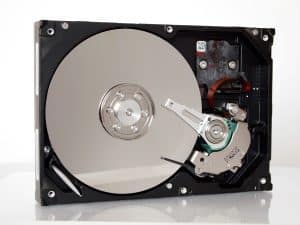Superconducting Circuits: Zero-Loss Computing
The world of computing is constantly evolving, with researchers and scientists striving to find ways to make our devices more powerful, efficient, and reliable. One technology that is quickly gaining attention in this field is superconducting circuits. These circuits have the potential to revolutionize the world of computing by providing a zero-loss solution that could increase speed, decrease energy consumption, and enable new functionalities. In this article, we will explore the world of superconducting circuits and how they are paving the way towards zero-loss computing. 
The Basics of Superconductivity
To understand superconducting circuits, we must first understand the concept of superconductivity. Simply put, superconductivity is the ability of certain materials to conduct electricity without any resistance. This means that when an electric current flows through a superconductor, there is no loss of energy, and the current can flow indefinitely. This phenomenon was first discovered in 1911 by Dutch physicist Heike Kamerlingh Onnes, who observed that certain metals, such as mercury, lose all electrical resistance when cooled to extremely low temperatures. Since then, scientists have been working to harness this property to revolutionize various industries, including computing.
How Superconducting Circuits Work
Superconducting circuits are built using superconducting materials, such as niobium, that exhibit zero resistance at extremely low temperatures, usually around -273°C. These circuits are composed of superconducting elements, such as wires, junctions, and loops, that allow for the flow of electrical current without any loss. Unlike traditional electronic circuits, which rely on the movement of electrons, superconducting circuits utilize a phenomenon called Cooper pairs to carry current. These pairs are comprised of two electrons that are bound together at extremely low temperatures, allowing for efficient and lossless flow of electricity.
The Advantages of Zero-Loss Computing
The use of superconducting circuits in computing has the potential to bring about a new era of zero-loss computing. This would mean faster devices, reduced energy consumption, and increased reliability. One of the biggest advantages of zero-loss computing is the elimination of heat dissipation. In traditional electronic circuits, energy loss due to resistance leads to the generation of heat, which can affect the performance and lifespan of the devices. With superconducting circuits, this heat dissipation is eliminated, making them more efficient and reducing the need for cooling systems. This also means that superconducting circuits can operate at much higher speeds without the risk of overheating.
The Future of Superconducting Circuits
While the potential of superconducting circuits in computing is promising, there are still some challenges that need to be addressed. One of the main challenges is the need for extremely low temperatures, which can be expensive and difficult to maintain. However, scientists are continuously working on developing materials and methods that can allow for superconductivity at higher temperatures. This would make it easier and more practical to incorporate superconducting circuits in various computing and electronic applications.
Conclusion
In conclusion, superconducting circuits have the potential to revolutionize the world of computing by providing a zero-loss solution that could greatly improve performance and efficiency. With the continuous advancements in technology, it is only a matter of time before we see the widespread adoption of superconducting circuits in various industries, paving the way towards a new era of zero-loss computing. So, keep an eye out for this exciting technology as it continues to develop and shape the future of computing as we know it.










